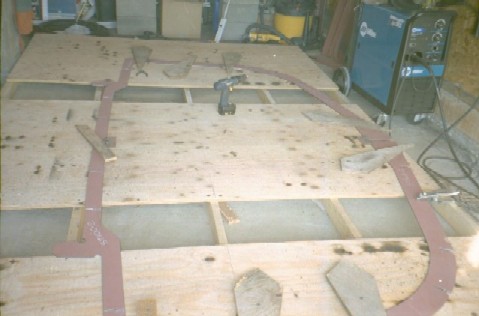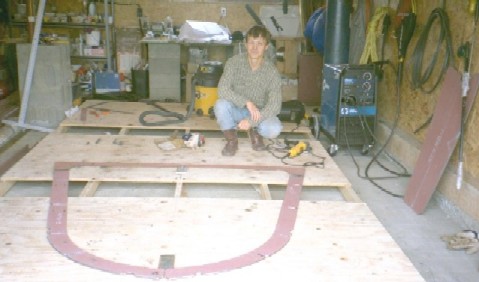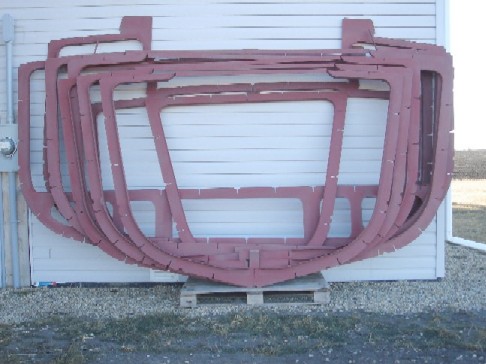
Frames
Making frames

This is how I did it. I purchased three sheets of three quoters of an inch plywood and screwed them to a frame built from two by four lumber spacing the sheets slightly apart to accomodate the largest frame. This became a platform for assembling the frames.
I put frame members on the platform, ensured the correct dimensions and screwed some pieces of plywood to hold the frame members in place while I was welding them. Despite of Bruce's advise, I didn't use tack welds but rather final welds on both sides. My argument for the final welds was that the frames were to define the hull shape, ought to be precise and should not have been adjusted later to compensate for any other imperfections in a hull.
My first frame is done

I welded all ten frames (#1, #2, #2.5, #3, #3.5, #4, #6, #8, #9, #10) in my garage. Then I realized that all frames were to be reinforced with flat bars. A flat bar is welded perpendicular to a frame on the inside and goes all the way around the frame forming a flange for future interior finishing.
This was my first experience with bending 40x4 and 50x4 mm flat bars. I initially prebent them with bare hands and then use clamps and a hammer to shape them along a frame. I tack welded it where it touched the frame and moved forward. Then I made final welds on both sides and ground the welds in a preparation for painting.

I had not much room in my garage, so ready frames were supposed to be stored outside for the winter and I didn't want them to become rusty. Since all parts had already been primed with Sigmaweld MC zinc reach primer, I had to order the same one, which was available from Sigma warehouse in Vancouver. Sigmaweld MC is two part primer: one part is zinc paste and the other is a binder. It dries in a few minutes in a room temperature.
I used a spray gun and 2 hp compressor to prime the welds.

